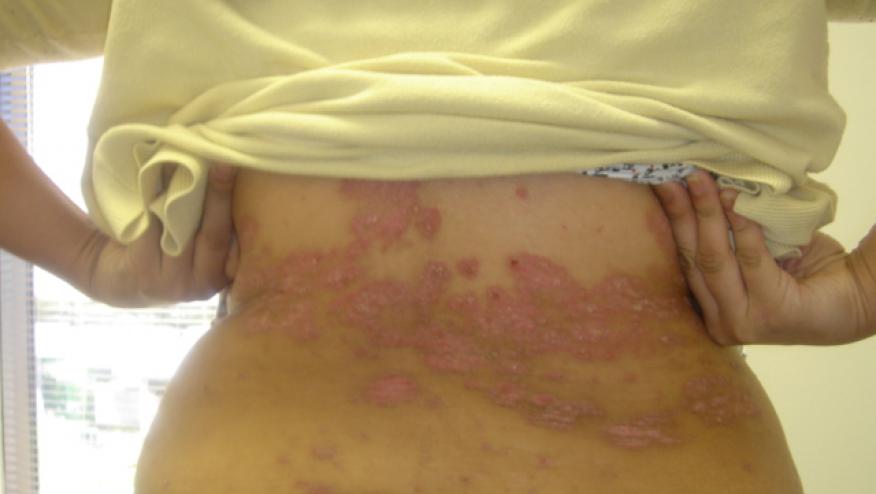EULAR Points to Consider in Progressing Psoriasis to Psoriatic Arthritis Save

The transition from psoriasis to PsA – and the early diagnosis of PsA – is of considerable scientific and clinical interest. People typically have psoriatic skin disease for a decade or more before they begin to experience the joint involvement of PsA. Understanding more about the natural history and trajectory of this disease will help in the future prevention of PsA, as well as shed more light on possible risk factors and predictors.
The new EULAR points-to-consider were developed by a multidisciplinary task force of 30 members from 13 European countries, with representation by rheumatology, dermatology, methodologists and patient research partners. The work product was based on two systematic literature reviews plus expert consensus.
Overall, 5 overarching principles and 10 points-to-consider were formulated. The principles acknowledge that people with psoriasis may develop PsA at different times – or not at all – and highlight that there is a need for close collaboration between dermatologists and rheumatologists – although the rheumatologist has a key role in PsA diagnosis and management. They also stress that being able to identify risk factors for PsA may influence therapy choices in people with psoriasis, especially since certain systemic treatments for psoriasis may reduce the risk of transition to PsA.
There are 10 points-to-consider, highlighting arthralgia (joint pain) and abnormalities seen on ultrasound or MRI (magnetic resonance imaging) as key elements of subclinical PsA that can potentially be used as short-term predictors of who will go on to develop PsA. This also makes these elements useful to help design clinical trials looking at PsA interception and prevention. Traditional risk factors for PsA development such as psoriasis severity, obesity and nail involvement may represent more long-term disease predictors. As such, these are felt to be less useful for short-term trials investigating the transition from psoriasis to PsA.
The task force also proposed some standard naming for three distinct stages in PsA development, namely people with PsO at higher risk of PsA, subclinical PsA and clinical PsA. The latter stage was defined as PsO and associated synovitis and it could be used as an outcome measure for clinical trials evaluating the transition from PsO to PsA.
The clinical onset if PsA is preceded by a preclinical phase where a person has arthralgia and immunological or imaging abnormalities, in the absence of a clinical diagnosis. The task force also proposed a definition for early psoriatic arthritis based on the development of joint swelling as a clinical outcome measure for trials of PsA prevention.
Overarching Principles
-
People with PsO may develop PsA at different time-points.
-
Close collaboration between dermatologists and rheumatologists is important to understand and optimise PsA prevention, interception and early diagnosis
-
The identification of risk factors for PsA development in people with PsO may influence therapy choices for PsO
-
The rheumatologist has a key role in the diagnosis and management of PsA
-
Certain systemic treatments of PsO may reduce the risk of transition to PsA.
Points to Consider
-
Arthralgia in people with PsO should be considered as a risk factor for PsA development, taking into account alternative diagnoses such as osteoarthritis and fibromyalgia.
-
In people with PsO, joint and entheseal pain and functional limitation should be enquired about regularly and, if present, referral to a rheumatologist should be considered.
-
Imaging (including ultrasound and MRI) in people with PsO could be used to help identify those at risk for PsA; in particular to detect synovio-entheseal involvement/abnormalities.
-
Imaging abnormalities in the absence of musculoskeletal symptoms should be considered carefully in order to avoid the risk of inappropriate treatment.
-
The combination of musculoskeletal symptoms and imaging abnormalities in people with PsO, without a diagnosis of PsA, should be considered as an entry criterion for clinical trials to prevent the transition to PsA.
-
In the context of clinical trials, people with PsO and clinically evident synovitis should be considered to have PsA, when alternative diagnoses have been excluded.
-
In people with PsO who require systemic treatment, the risk of transition to PsA should be taken into account in the choice of treatment.
-
People with PsO with obesity, nail disease and/or extensive PsO should be considered at increased risk for PsA development over the longer term.
-
People with PsO should be informed about the risk of developing PsA and prompted to report their symptoms to facilitate early PsA recognition.
-
In people with PsO, risk factors for PsA development should be regularly assessed over time.
EULAR hopes this publication will help to define the clinical and imaging features of people with psoriasis who should raise clinical suspicion for progression to PsA. They also hope it can be used to identify people who could benefit from a therapeutic intervention to delay or prevent PsA. In the meantime, people with psoriasis should be informed about the risk of developing PsA and encouraged to report their symptoms to facilitate early PsA recognition.










If you are a health practitioner, you may Login/Register to comment.
Due to the nature of these comment forums, only health practitioners are allowed to comment at this time.